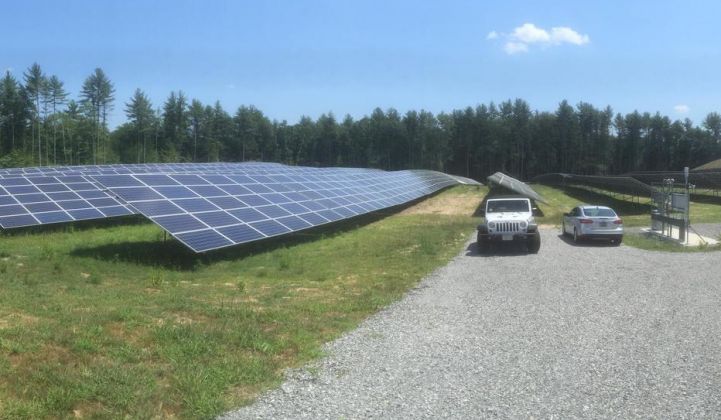Last year, NRG Energy announced its intentions to develop 100 megawatts of community solar projects, staking a big claim to the nascent market -- or in the United States, 50 markets. That’s because the value of community solar means something very different, depending on the state you’re in.
While 24 states have at least one community solar project on-line, and 20 states are in the process of enacting community solar, only a handful -- Colorado, Massachusetts, Minnesota, New York and California -- are responsible for the vast majority of growth in the sector. In each of these states, the rules and opportunities are quite different.
Take Minnesota, where NRG just broke ground on six community solar sites, ranging from 3.1 megawatts to 6.7 megawatts in size, adding up to nearly 30 megawatts. It’s the biggest set of projects yet so far for its community solar effort, helped by a key feature of Minnesota’s community solar statute that allows commercial customers to join residential in owning a share of the pie.
"For each of our projects, we have multiple commercial customers,” said Drew Warshaw, NRG’s vice president of community solar. It also has around 1,000 residential customers.
So far, NRG has signed up U.S. Bank, Land O’Lakes, Macy’s and Ecolab as customers, with each “subscribing” a different building or chain of buildings to the program under 25-year solar subscription agreements.
Each site will use its slice of community solar energy to spin its meter backward and lower its power bill, and get credited at the net-metering retail rate for excess generation. While no single customer can own more than 40 percent of any site’s solar output, they can still get access to a lot more solar than they’d be able to generate if limited to solar panels on their rooftops or parking structures, Warshaw noted.
That’s one of the key rationales behind community solar programs, which fall somewhere in between net-metered rooftop solar and utility-scale solar. “You have the opportunity to get the benefit of this type of a product, the long-term savings on your electricity bill, and the ability to support development and construction of renewable projects. But you don’t have to have a roof that’s southern-facing, with no trees in the way."
Minnesota is the third state in NRG’s community solar portfolio, and right now it’s the most promising market, Warshaw added. The company started out in Colorado, with an 8.2-megawatt project through its partnership with SunShare. But Colorado’s market has largely subsided in the past year or so, and “we don’t see it as a significant growth market,” he said.
Last year, NRG moved into Massachusetts with a 1-megawatt community solar project serving about 200 homes in partnership with Borrego Solar, and in June added a new 1.3-megawatt project serving about 170 homes. “Right now we have a robust pipeline in Massachusetts, and are excited about the opportunities today,” said Warshaw.
At the same time, however, ongoing regulatory changes in the state have put the future value of community solar projects in question -- a set of circumstances we’ve been tracking at GTM Research. “That’s a market that’s really in the process of changing pretty significantly, and it’s something we’re keeping a close eye on," said Warshaw.
New York is the third market with big growth opportunities -- if the state can manage to smooth out the process for bringing it on-line. While New York has an impressive 1.8 gigawatts of community solar in its pipeline, GTM Research forecasts that only about 125 megawatts are feasible projects.
Meanwhile, New York is facing a major solar interconnection backlog, largely driven by the rush of community solar projects after the program was launched last year. “We need them to tighten up the program, and bring that headline number down to something that’s manageable and doable,” he said.
NRG is also keeping an eye on other states where opportunities are emerging. Some interesting ones are in Maryland, where a pilot program is in the midst of launching, and Oregon and Rhode Island, which are in different stages of the regulatory process.
In the meantime, utilities are getting involved in community solar projects, with electric cooperatives and municipal power providers doing larger numbers of smaller projects, and a few states opening opportunities to investor-owned utilities.
GTM Research projects that the next five years will see major growth in community solar, adding up to 1.8 gigawatts by 2020, compared to just 66 megawatts through the end of 2014. That growth could shift community solar’s share of overall U.S. solar installations from less than 1 percent today to nearly 5 percent by 2020.
“The community solar marketplace is not the largest out of the different solar asset classes,” Warshaw said. “But it may be, over the next several years, the fastest growing.”



